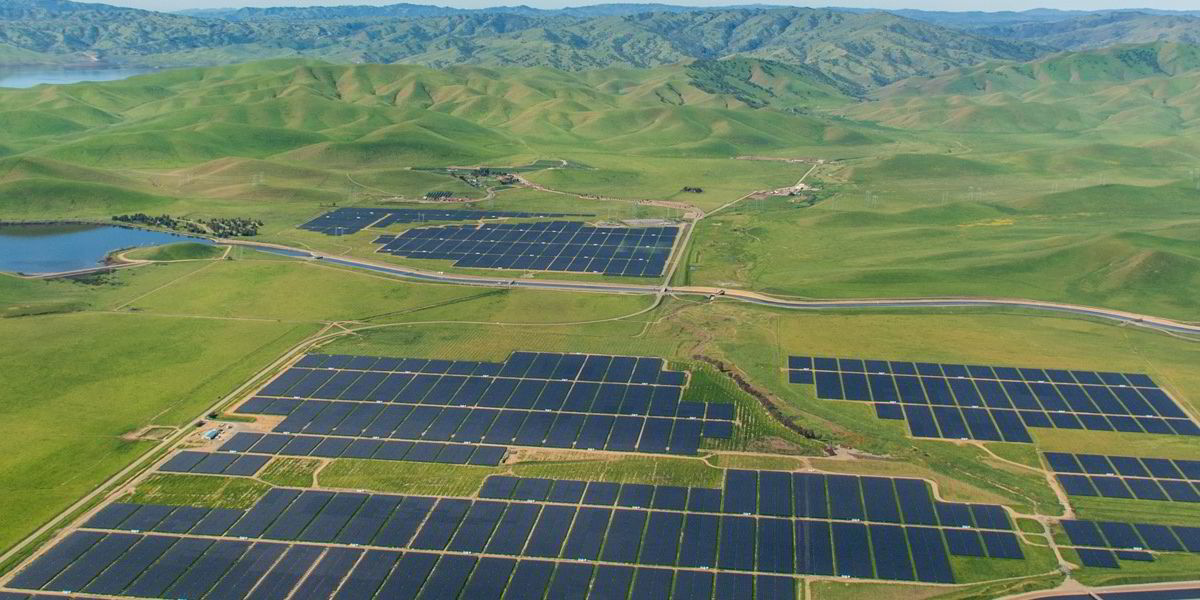SunPower, majority owned by French energy giant Total, launched its Oasis system in 2010, bundling its in-house panels, trackers and other components into one pre-engineered, modular package to help strip complexity out of building ground-mounted PV plants.
The latest version of Oasis – the third generation – includes a number of eye-catching innovations.
To start, the new “GEO” system uses drones and cloud-based software to generate thousands of possible project designs for a given plot of land, allowing developers to quickly screen potential sites and tailor projects to their specific financial and energy-production goals.
Solar projects under evaluation can be designed 90% faster using Oasis and drones than those using conventional technology, SunPower says.
“Oasis allows customers to generate more value from a broader selection of potential power plant sites, at an accelerated pace,” says Tom Werner, SunPower’s chief executive.
The trackers included with Oasis are “un-ganged” – or not linked – which opens up areas for solar development that would have previously been considered unsuitable. Oasis systems can be built on slopes of up to ten degrees, compared to the six-degree limit for most competing technologies, SunPower says.
“While flat, rectangular-shaped sites are required for other trackers on the market, Oasis can take advantage of unused irregularly shaped areas and slopes up to ten degrees to generate up to 60% more energy than conventional technology installed at the same site,” Werner says.
In 2013 SunPower acquired Greenbotics, a California-based maker of robots for cleaning dusty panels. The company says it is now developing robots that will be able to clean 10MW of panels in 10 hours with three human workers – twice as fast as its existing robotic cleaning technology, and 10 times faster than manual cleaning methods.
The robots also use 75% less water than manual cleaning, and unlike humans they can easily operate at night to maximise daytime power generation.
SunPower says it already has 700MW of orders for the new Oasis system, and will kick off construction on projects using the system in the US and China over the next few weeks. From next year, all new SunPower plants will use the technology.
The unveiling of SunPower’s latest Oasis upgrade – made at the company’s new R&D facility in Davis, California – comes less than two months after the company announced a “streamlining” of its power-plant development business. SunPower will now focus on developing in-house projects primarily in the US and a select few markets across the Americas.
However, SunPower intends to continue selling its Oasis systems – and the modules that go into them – to developer and EPC clients around the world, including Total.
SunPower also announced it is working closely with the University of California, Davis, a leader in agricultural studies, to look at ways of more cleverly integrating large-scale solar plants with farms – a key consideration for the future of solar development in many parts of the world.
Since the first-generation of Oasis was launched in 2010, more than 3GW of projects have been built using the system for a range of customers that includes US utility Xcel and Spanish renewables developer Iberdrola.
The largest operating solar plant in the world -- the 579MW Solar Star projects in California, owned by Warren Buffett's BHE Renewables -- were built using Oasis.
Acquisition of Malaysian cell JV
Separately, SunPower on Monday announced it will buy out AUO's portion of the two companies' joint venture for cell manufacturing, settling a dispute between them.
SunPower will pay AUO $170m over the next four years, taking full ownership of a 800MW factory in Melaka, Malaysia. The deal is expected to close by the end of September.
AUO will remain a wafer supplier to SunPower.
